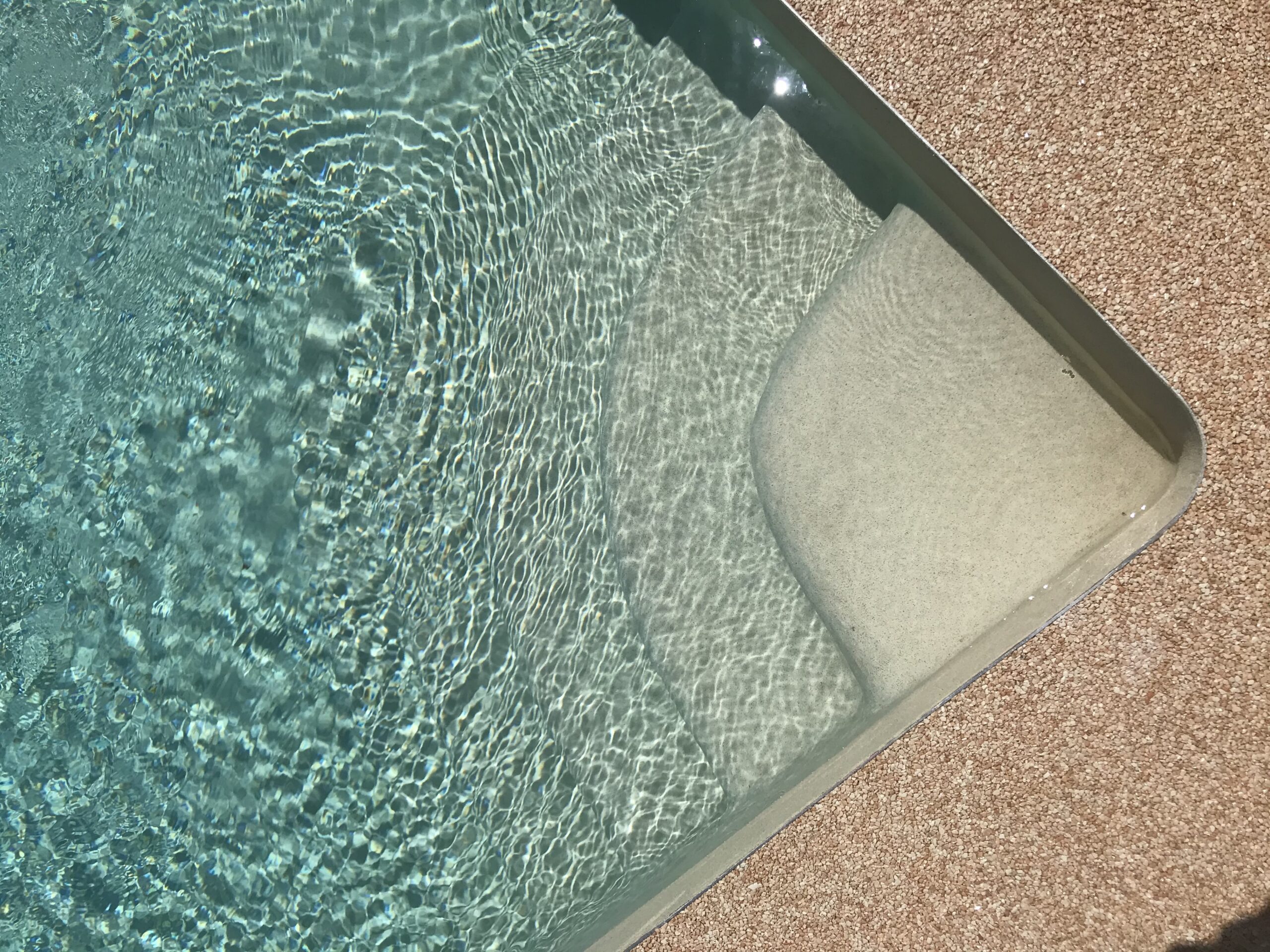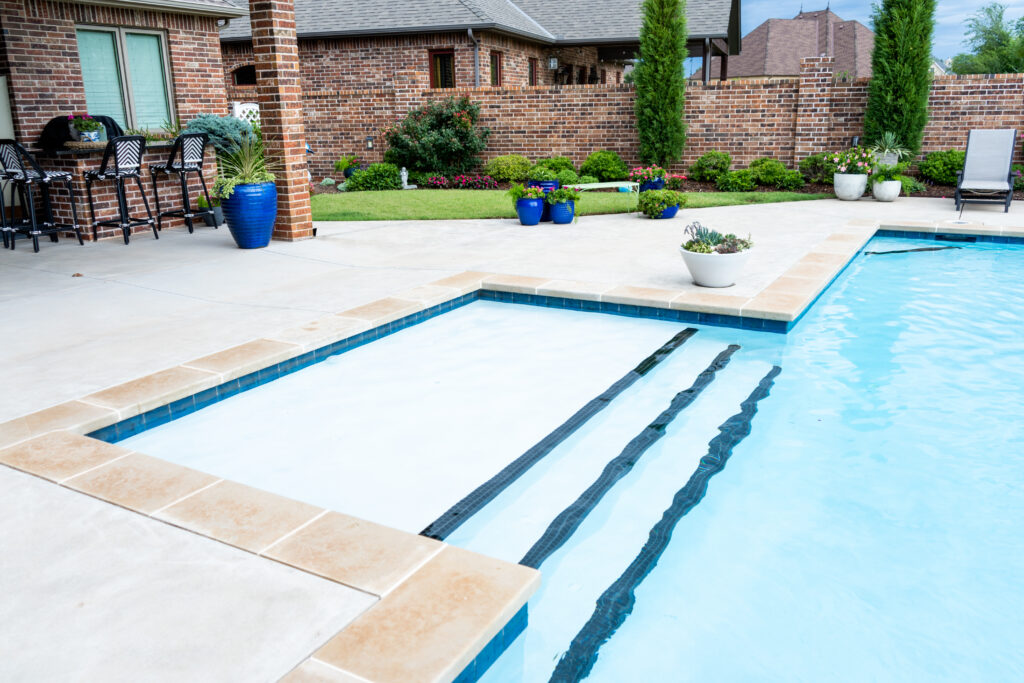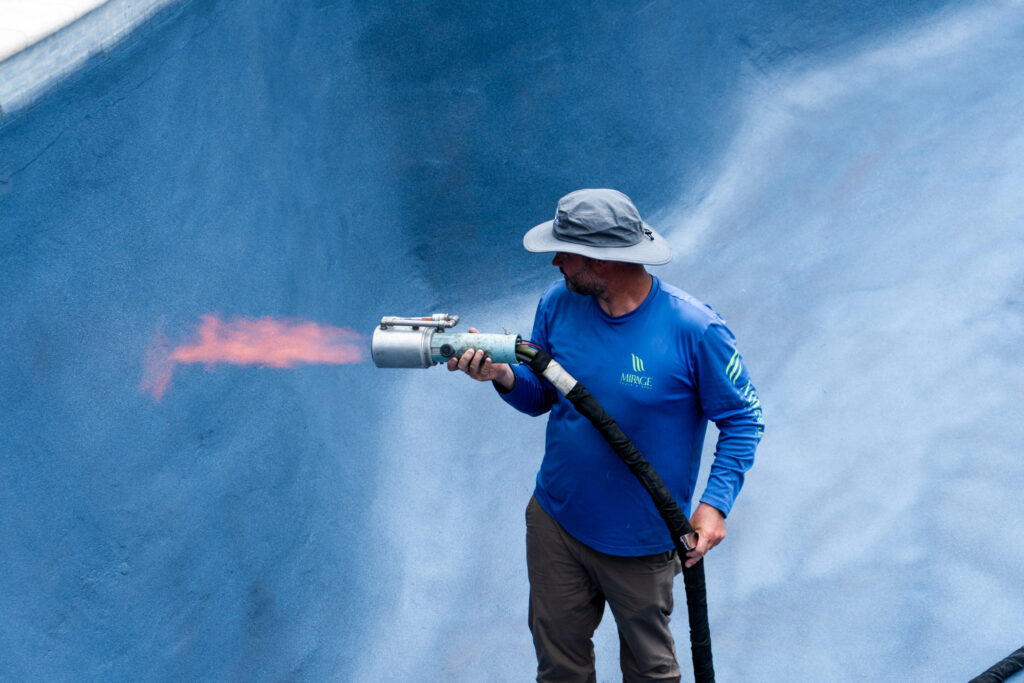How Many Times Can a Pool Be Resurfaced?

Is your swimming pool starting to show signs of wear and tear? It’s a common issue that leads many to wonder about the frequency of pool resurfacing. The typical pool needs a new surface every 8-10 years, but various factors can adjust this timeline.
This blog will guide you through understanding when and how often your swimming pool requires resurfacing, exploring materials, costs, and maintenance tips to prolong your pool’s lifespan.
Factors Affecting Pool Resurfacing Frequency
The frequency of pool resurfacing is influenced by factors such as the type of pool finish and material used, as well as the level of usage and durability of the pool surface. These elements play a crucial role in determining how often a pool needs to be resurfaced.
Type of pool finish
Different types of pool finishes affect how often a pool needs resurfacing. Plaster and cement pools, for instance, typically require a new surface every three to seven years due to their vulnerability to wear and tear.
On the other hand, fiberglass pools boast a much longer lifespan, with some lasting 20 to 30 years before needing resurfacing. This longevity stems from fiberglass’s durable nature, making it less susceptible to damage and easier on maintenance schedules.
Choosing the right type of pool finish can greatly influence maintenance efforts and costs down the line. While plaster might offer an affordable upfront option, its shorter lifespan means more frequent resurfacing jobs compared to the more enduring fiberglass option.
ecoFINISH offers an innovative solution with impressive durability and aesthetic appeal. These coatings can extend the lifespan of a pool surface while providing a smooth, vibrant finish resistant to fading, staining, and chipping.

Pool usage
Pool usage significantly impacts the frequency of pool resurfacing. The more a pool is used, the quicker it will require resurfacing. Pools experiencing heavy use may need to be resurfaced in as little as three to seven years for cement and plaster surfaces, while less frequently used pools can go up to 15-20 years before needing resurfacing.
Determining the Need for Pool Resurfacing
Is your pool showing signs of wear and tear? Professional examination and determining the need for resurfacing can save you money in the long run.
Signs of wear and tear
Pools usually show signs of wear and tear such as chalking or flaking plaster, roughness on the pool surface, staining or discoloration, and cracks in the pool structure. These signs can indicate a need for resurfacing.
It’s important to pay attention to these visual cues as they can directly impact the longevity of the pool surface and help determine when maintenance is needed.
When to call a professional
If pool surfaces show signs of wear and tear, such as cracks, rough patches, or discoloration, it’s time to seek professional advice. Factors like the pool usage and type of finish influence the need for resurfacing.
Regular inspections by a professional are crucial in determining when it’s time for pool resurfacing. You can resurface a pool yourself, but you will be limited in the materials you can use.

Resurfacing costs
Pool resurfacing costs can vary widely depending on factors such as the type of finish and size of the pool. Typically, the cost can range from $5,000 to $10,000 for standard replastering and may go higher for premium finishes or extensive repairs.
Fiberglass resurfacing tends to be more expensive initially but is known for its durability, potentially saving money in the long run. It’s important to consider these costs alongside the lifespan of different materials when planning for pool maintenance.
Options for pool resurfacing
There are various options for pool resurfacing based on the type of pool and desired durability. For cement or plaster pools, replastering with a new layer of plaster is a common option.
Alternatively, pool owners can opt for more durable materials such as pebble finishes, aggregate surfaces, or ecoFINISH coatings like aquaBRIGHT or polyFIBRO which can last over ten years before needing resurfacing.
Maintaining and prolonging pool surface lifespan
Proper maintenance and regular inspections can help extend the lifespan of the pool surface, reducing the frequency of resurfacing. By following a consistent pool maintenance schedule and using suitable cleaning chemicals, you can protect the pool from premature wear and tear caused by excessive usage or harsh environmental conditions.
Additionally, considering more durable materials for initial construction or during resurfacing can significantly increase the time between required treatments. Moreover, being mindful of exposure to sunlight and regularly assessing the chemical balance in your pool water contributes to prolonging its surface lifespan.
Consistent care and attention play a crucial role in maintaining an optimal condition for your pool’s surface.
Conclusion
Pool resurfacing frequency varies based on factors like pool finish, material used, usage, and maintenance.
The level of sunlight exposure and chemicals in the pool also impact resurfacing needs. Regular maintenance and inspections extend the surface lifespan, reducing the need for frequent resurfacing.
FAQs
A pool can be resurfaced multiple times, depending on the type of pool material and its durability.
The frequency for different types of pools to be resurfaced depends on the wear and tear, as well as the durability of their surfaces.
Yes, there are various options for pool resurfacing materials, including plaster, pebble finishes, aggregate surfaces, and ecoFINISH coatings, which you can explore during your pool renovation process.
